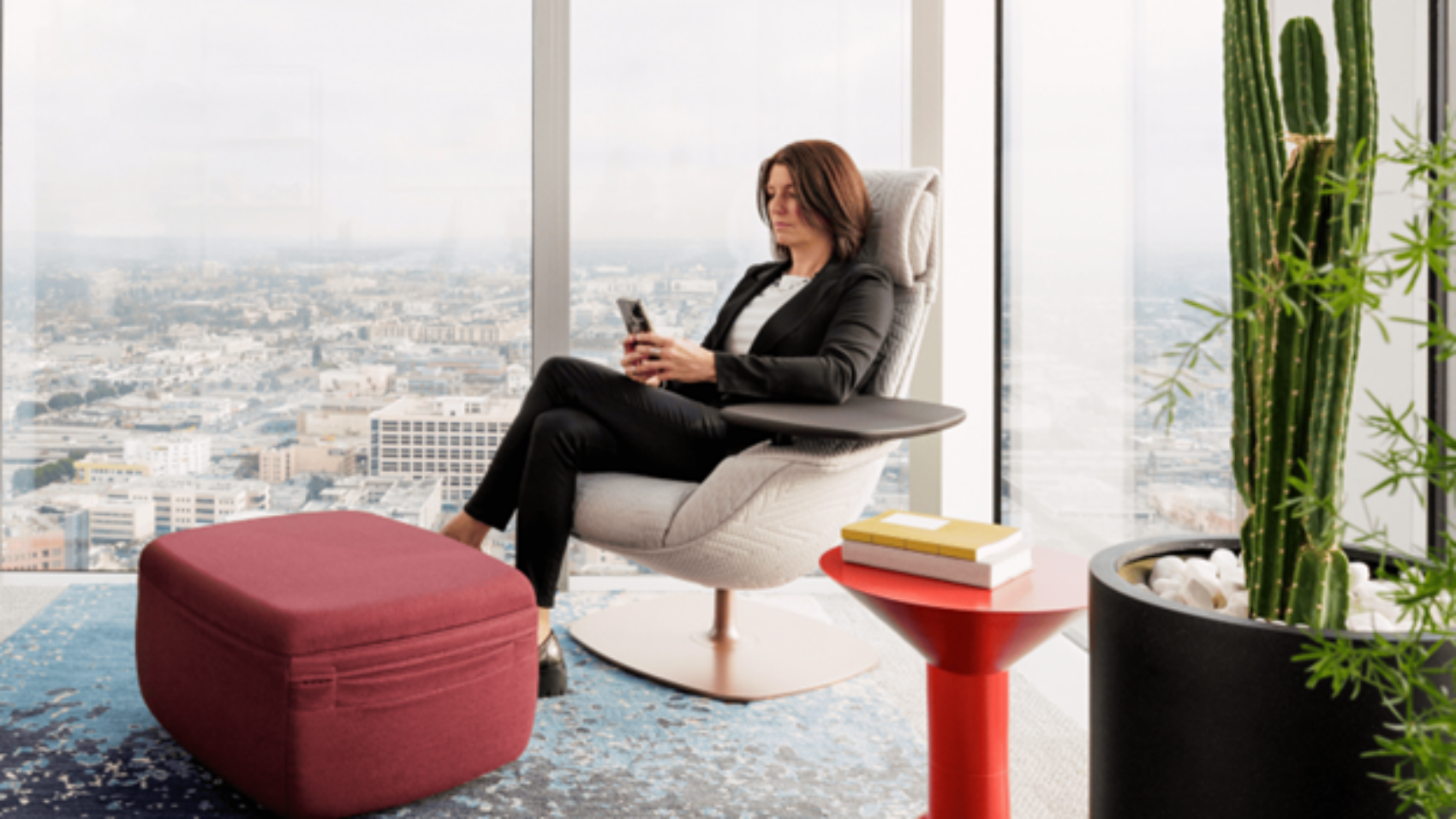1. An open office isn’t always the best place to work – particularly now that many people take virtual calls throughout the day.
- With so many audio-visual distractions, there aren’t enough personal spaces in most offices for people to focus, take a call or rejuvenate.
- Busy backgrounds and a lack of boundaries distract during video calls.
- Many spaces aren’t remote-ready. Power, lighting and monitors make it easier to connect.
- Lack of informational privacy can prevent people from talking about or showing content on sensitive or topics.
2. Offer a variety of privacy options.
Fully enclosed enclaves, pods, screens or shelves can provide diverse ways for people to seek out the right level of privacy for the type of work they’re doing. Well-curated backgrounds can provide a professional look free of distraction for those on the other side of the meeting.
3. A range of seating is needed to support different types of work.
For shared spaces, chairs should respond to bodies of all shapes and sizes and require a few manual adjustments to get comfortable. People with assigned spaces will want a fully adjustable chair they can dial in to their exact preferences, that keeps them comfortable longer.

4. Whether sharing or calling it your own, height- adjustable desks are worth it.
More people ca uses the same space comfortably if shared, and those with assigned desks who may sit longer can change postures and keep moving.
5. Provide optimal lighting for different kinds of hybrid work.
A task light that is designed for on-video experiences highlights people’s faces and helps them control their appearance on camera and make up for ambient light. A table lamp with a shade that provides a soft glow also works well.
6. External monitors not only make it easier to toggle between tasks, but they can make it easier to share content on video.
External cameras can be repositioned or refocused so people or content can be seen well.

7. Flexible power allows people to keep personal devices charged wherever they choose to focus.
While power is standard in most personal spaces, in many shared spaces it can be an afterthought or costly to install, which is where flexible power comes in.
8. Most remote workers experience audio and video difficulties.
- 89% struggle with video.
- 85% struggle with audio.
Receive our Newsletter
To receive our newsletter, including new editions of spaces and other digital content, fill out the form:







